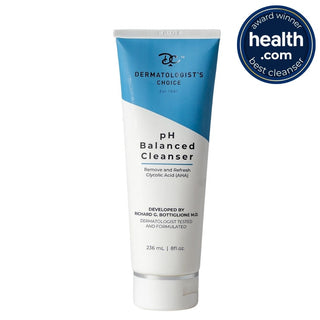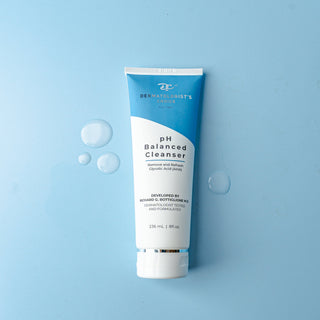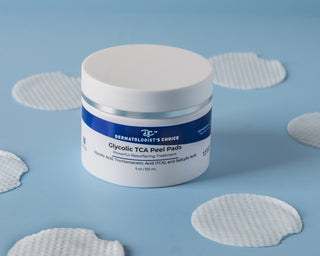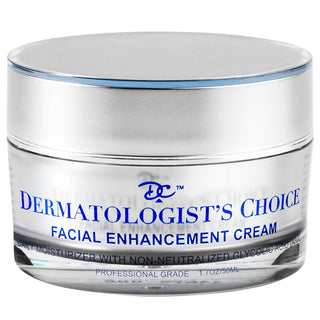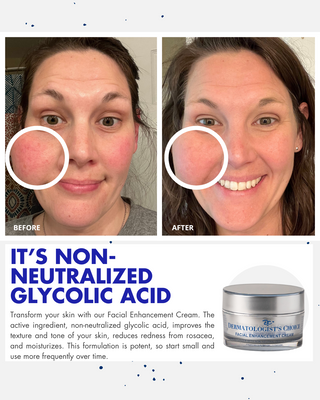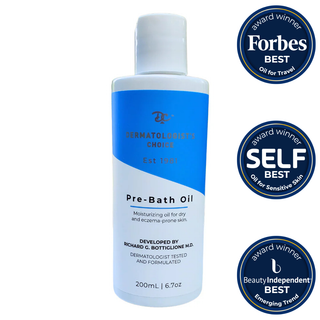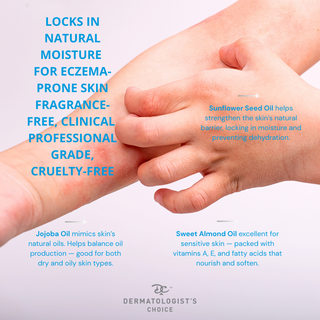Glycolic acid is a type of alpha-hydroxy acid (AHA) that is derived from sugar cane and is commonly used in chemical peels and skincare products. It is known for its ability to exfoliate the skin and improve the appearance of acne scars, fine lines, and uneven skin tone. However, glycolic acid can cause redness and dryness, which can be uncomfortable and even lead to irritation and sensitivity. I have never seen the redness and dryness cause scaring. In this blog, we will discuss how to reduce redness and dryness after using glycolic acid on your skin.

-
Start with a lower concentration of glycolic acid: If you are new to using glycolic acid or have sensitive skin, it is best to start with a lower concentration of glycolic acid (around 5-10%). It is important to note, some dryness should be expected after using glycolic acid because of the nature of this chemical exfoliatant. Dermatologist and founder of Dermatologist's Choice, Dr. B. recommends the mild glycolic acid cream, the Facial Enhancement Cream to start compared to the more potent Ultra Anti-Aging Cream. This will allow your skin to gradually get accustomed to the acid and reduce the chances of irritation. Pro Tip: Glycolic is not a harmful ingredient. In most cases some redness and dryness is a good sign the glycolic acid is working deep in the skin. This is what you want! Moistuizing with Dermatolist's Choice hydrating cream or Vaseline is the first option. In the event you continue to experience redness or dryness after using glycolic acid, it's your chance to determine if that particular concentration of glycolic product is the best for your skin. For example, if you use a Glycolic Peel Cleansing Pad (10% non-neutralized Glycolic) and your skin is red or dry immediately or 24-48 hours after using it, first identify if the glycolic was too strong for your skin and second, if the vehicle (pads) were the best for your skin type. Further, if you have more dry skin in general using a glycolic cream as mentioned above vs. a glycolic cleansing pad may be best. The vise versa applies to more oily skin types.
-
Use glycolic acid in your evening skincare routine: Glycolic acid can make your skin sensitive if it's your first time using the ingredient or it's a high concentration for your skin's tolerance, so it is best to use it in your evening skincare routine. This will allow your skin to repair itself while you sleep and reduce the chances of further irritation. Also incorporating the glycolic in a cream form like the Facial Enhancement Cream reduces any redness that may be caused by the ingredient by itself.
-
Follow with a moisturizer: After using glycolic acid, it is important to follow with a moisturizer to help hydrate and nourish the skin. This will help reduce dryness and improve the overall appearance of your skin.
-
In the AM use a broad-spectrum sunscreen: As mentioned earlier, glycolic acid can make your skin more sensitive. To protect your skin from further irritation and damage, it is important to use a broad-spectrum sunscreen with an SPF of 30 or higher.
-
Take breaks from using glycolic acid: If you are using glycolic acid regularly, it is important to take breaks from using it to give your skin a chance to recover. This can be especially helpful if you are experiencing redness and dryness after using the acid. A rule of thumb is start with non-neutralized glycolic acid products, like Dermatologist's Choice, once a week for three weeks, then add a day each week. This approach will help your skin grow a tolerance to the non-neutralized glycolic without being overwhelmed.
-
Avoid using other exfoliating products such as physical exfoliants (e.g. scrubs) or other AHAs because they will help the glycolic penetrate deeper: These products can further irritate the skin and increase redness and dryness.
-
Use a calming skincare product: If your skin is feeling particularly red and sensitive after using glycolic acid, it can be helpful to use a calming skincare product, such as the Pre Bath Oil, lotion or cream. These ingredients can help soothe and calm the skin.
-
Consult a dermatologist: If you are experiencing severe redness and dryness after using glycolic acid and are unable to find relief after using moisturizers for a week, it is important to consult a dermatologist. This is rarely necessary. They will be able to assess your skin and provide you with prescription products to reduce irritation and improve the overall health of your skin.
Overall, glycolic acid is a powerful skincare ingredient that can provide numerous benefits for the skin. However, it is important to use it properly and take steps, if needed, to reduce redness and dryness if they occur. In general, redness and dryness need not worry you just decrease the use until your face tolerates it. By following the tips outlined in this blog, you can help ensure that your skin is healthy, nourished, and radiant.
To start incorporating a non-neutralized glycolic acid skincare product in your skincare routine try the Dermatologist's Choice 60 Seconds to Glow Starter Kit.




